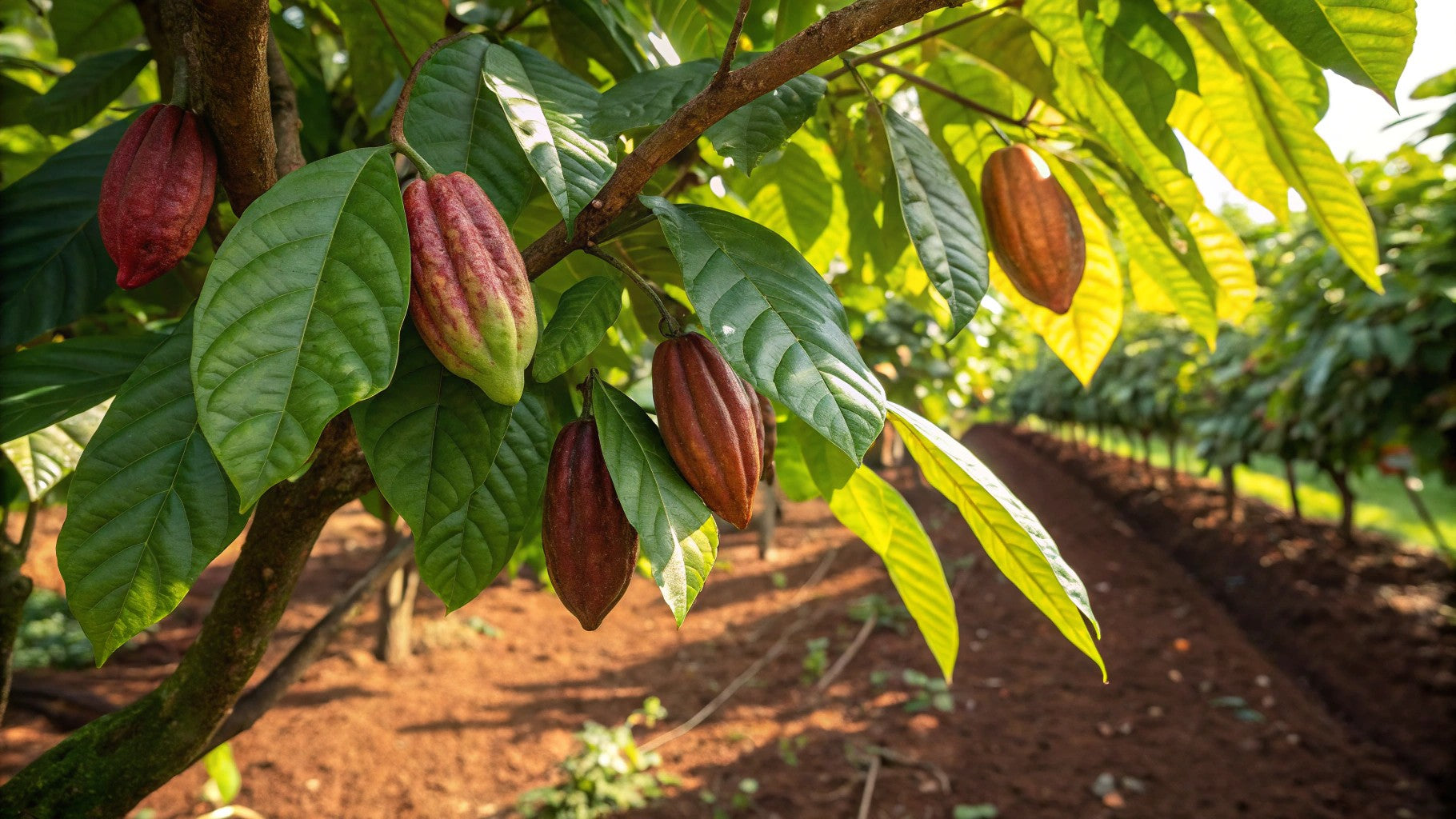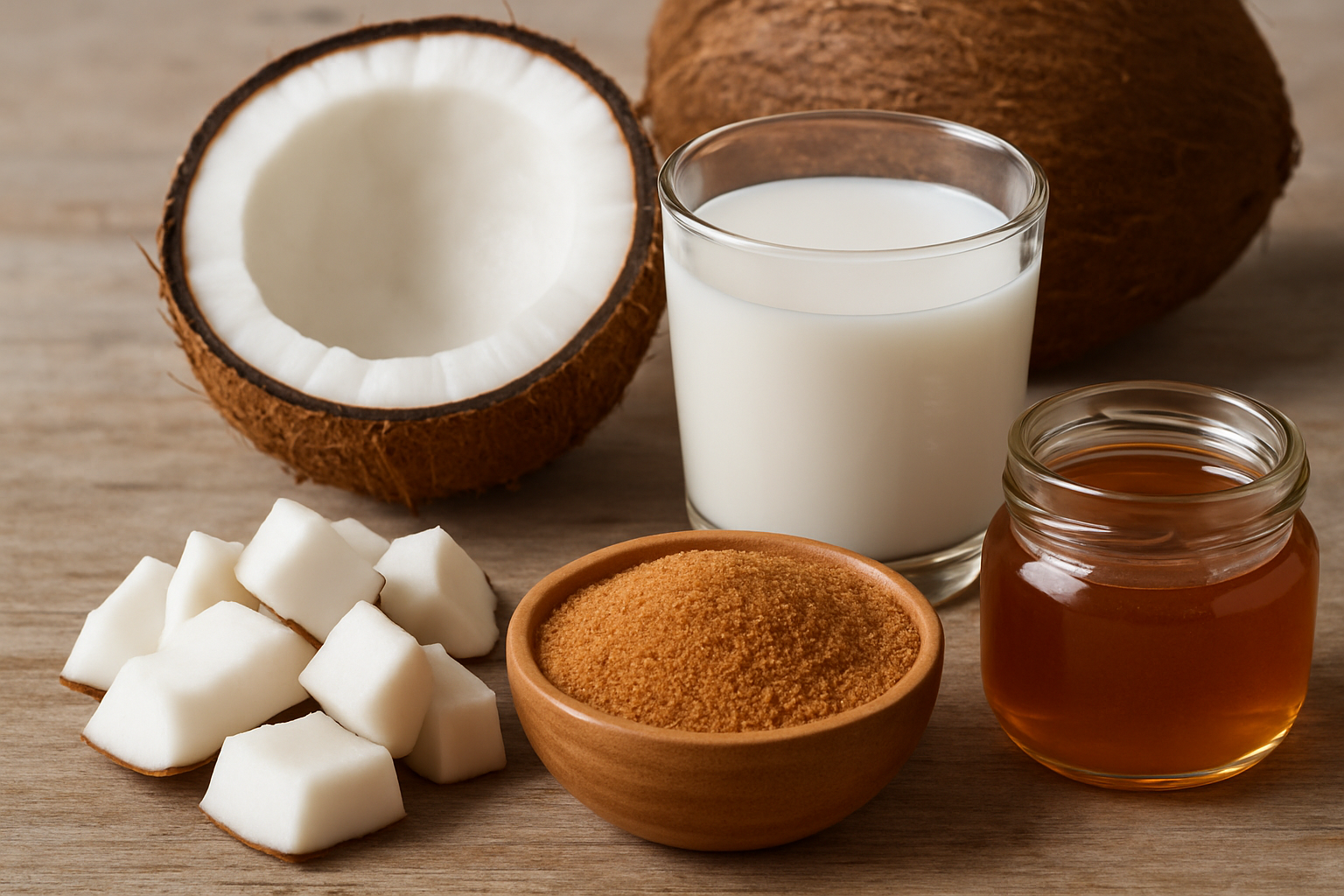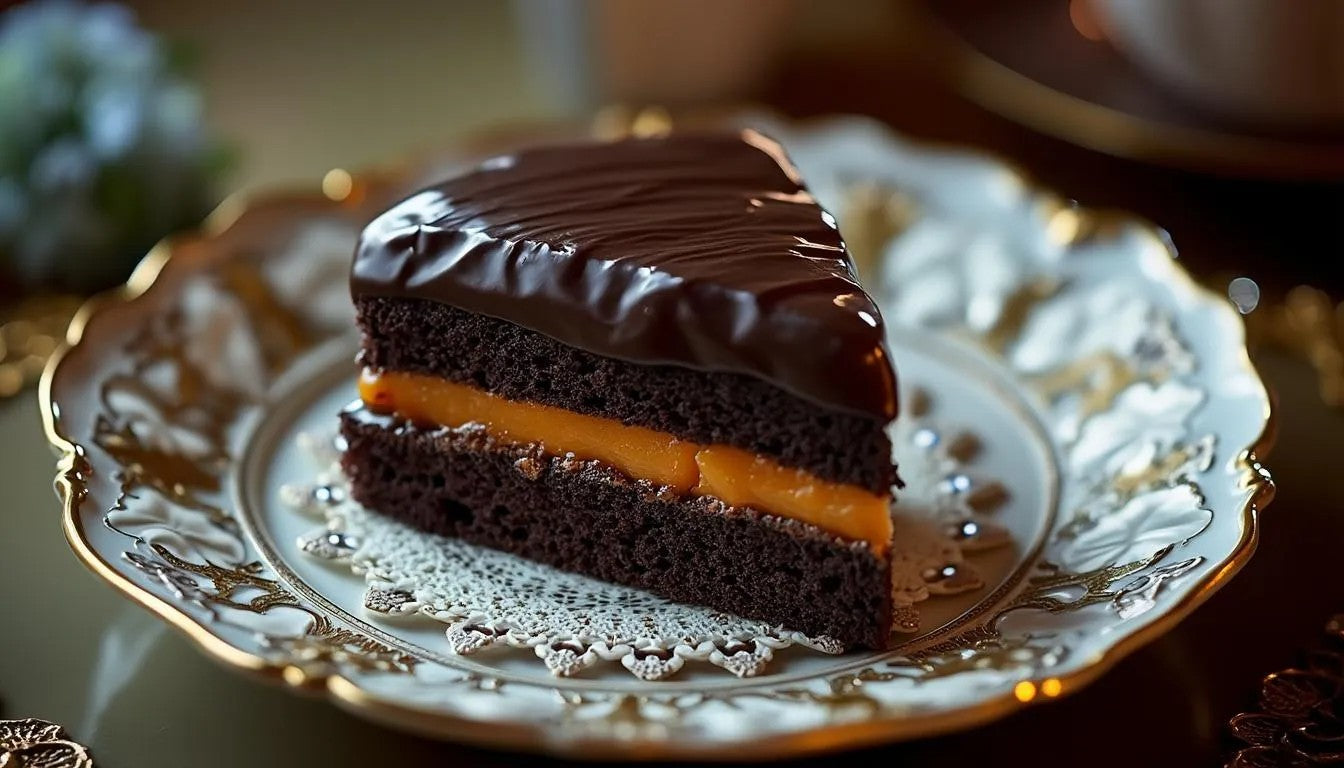
The Cocoa Tree: Nature's Extraordinary Chocolate Factory
The journey of chocolate begins with a remarkable tropical tree that has captivated humanity for thousands of years. The cocoa tree, scientifically known as Theobroma cacao, which aptly translates to "food of the gods," stands as one of nature's most precious gifts. At Coracao Confections, our commitment to creating exceptional chocolate starts with a deep respect and understanding of this extraordinary tree and the complex ecosystem required for it to thrive.
In this comprehensive guide, we'll explore the fascinating world of the cocoa tree—from its biology and cultivation requirements to the careful journey its beans take to become the premium chocolate you know and love. Understanding this remarkable plant helps us appreciate not just the delicious end product, but also the importance of sustainable farming practices that ensure cocoa trees continue to flourish for generations to come.
The Biology of the Cocoa Tree: A Tropical Marvel
The cocoa tree is a fascinating botanical specimen with unique characteristics that make it perfectly adapted to its natural habitat while also presenting challenges for cultivation.
Native Habitat and Growth Requirements
Cocoa trees are native to the deep tropical regions of Central and South America, specifically the Amazon basin, where they evolved as understory trees in the rainforest. These trees thrive under very specific conditions:
- Temperature: Require a consistent 65-90°F (18-32°C) environment
- Rainfall: Need 40-100 inches (1000-2500mm) of annual rainfall
- Humidity: Prefer high humidity levels of 70-100%
- Shade: Young trees require significant shade protection
- Soil: Thrive in deep, rich, well-drained soils high in organic matter
- Altitude: Generally grow best at elevations below 1,000 feet (300 meters)
These exacting requirements explain why cocoa cultivation is limited to a narrow band approximately 20 degrees north and south of the equator, often referred to as the "Cocoa Belt."
The Cocoa Tree's Unique Features
Mature cocoa trees typically reach heights of 15-25 feet (4.5-7.5 meters) when cultivated, though they can grow taller in the wild. What makes these trees particularly fascinating is their cauliflorous nature—they produce flowers and fruit directly from their trunk and main branches rather than from new growth.
The tree's delicate pink or white blossoms are tiny—only about half an inch in diameter—yet they're vital to the chocolate-making process. These flowers grow in clusters directly from the trunk and older branches, creating a striking visual as colorful pods later develop in the same locations.

The Lifecycle of a Cocoa Tree
The journey from seed to productive cocoa tree requires patience:
- Germination: Seeds (beans) germinate within a week when fresh but lose viability quickly
- Early Growth: Seedlings require careful shade management for the first 3-4 years
- Maturity: Trees begin producing flowers at 3-5 years of age
- Productivity Peak: Maximum yield typically occurs between 8-15 years
- Longevity: Can produce for 25-30 years or more with proper care
Perhaps most remarkable is the year-round flowering pattern. A single healthy tree can produce thousands of flowers annually, but only about 1-5% are successfully pollinated, primarily by tiny midges of the Forcipomyia genus. This low pollination rate highlights the delicate ecological balance required for successful cocoa production.
For those interested in the relationship between quality cocoa and exceptional chocolate, our Vegan Dark Chocolate 81% showcases the extraordinary flavor that properly cultivated cocoa trees can produce.
The History of Cocoa: From Ancient Civilization to Global Cultivation
The story of the cocoa tree is intertwined with human history, beginning thousands of years ago in the Americas.
Ancient Origins
Archaeological evidence suggests that cocoa was cultivated by the Olmec civilization as early as 1500 BCE in what is now Mexico. The Maya and later the Aztecs elevated cocoa to sacred status, using it in religious ceremonies and as currency. The Aztec emperor Montezuma reportedly drank 50 cups daily of xocolātl—a bitter, spiced cocoa beverage quite different from today's sweet chocolate.
Global Spread of Cocoa Trees
After European contact with the Americas, cocoa began its global journey:
- 1500s: Spanish conquistadors bring cocoa back to Spain
- 1600s: Cultivation spreads to other European colonies
- 1700s: Introduced to the Philippines by Spanish colonists
- 1800s: Cultivation expands to Africa, with Ghana and Côte d'Ivoire eventually becoming major producers
- 1900s: Southeast Asian countries like Indonesia develop significant cocoa industries
Today, West Africa produces approximately 70% of the world's cocoa, with Latin America and Southeast Asia accounting for most of the remainder. This global spread has created diverse growing regions, each imparting unique flavor characteristics to the cocoa beans they produce.

Cocoa Tree Varieties: The Diversity of Chocolate Flavors
Like wine grapes, different varieties of cocoa trees produce beans with distinctive flavor profiles. There are three main genetic groups, each with its own characteristics:
Criollo: The Original Treasure
Criollo represents the original cocoa tree variety domesticated by ancient Mesoamerican civilizations. These trees produce beans renowned for their complex, delicate flavors with notes of fruits, caramel, nuts, and spices. Unfortunately, Criollo trees are:
- Highly susceptible to disease and pests
- Lower-yielding than other varieties
- More difficult to grow successfully
Despite these challenges, Criollo beans are highly prized by artisanal chocolate makers for their exceptional flavor complexity. They represent only about 5% of world production but command premium prices. Our Cherry Amaretto Dark Chocolate showcases the nuanced flavor profiles that can be achieved with fine cacao.
Forastero: The Hardy Producer
Forastero varieties are more robust and disease-resistant than Criollo, making them the workhorses of global cocoa production. These trees produce beans with stronger, simpler flavor profiles often described as earthy or basic "chocolatey." Forastero accounts for approximately 80% of world cocoa production, primarily from West Africa.
While sometimes considered less complex in flavor than Criollo, well-fermented Forastero beans can produce excellent chocolate with proper post-harvest processing.
Trinitario: The Hybrid Vigor
Trinitario trees emerged naturally from crossbreeding between Criollo and Forastero varieties in Trinidad. This hybrid group combines the flavor complexity of Criollo with the hardiness and productivity of Forastero, offering:
- Better disease resistance than Criollo
- Higher yields than Criollo
- More complex flavors than typical Forastero
- Greater adaptability to different growing conditions
Trinitario varieties represent about 15% of world production and are often sought after by craft chocolate makers seeking a balance of flavor complexity and reliable cultivation.
For those curious about how different cocoa varieties influence chocolate flavor, our blog post on Types of Chocolate Bars provides deeper insights.
From Tree to Bean: The Journey of Cocoa Pods
The transformation from cocoa flower to harvested bean involves multiple fascinating stages:
Pod Development and Ripening
After successful pollination, the cocoa flower develops into a pod (fruit) that:
- Takes 5-6 months to fully mature
- Grows directly from the trunk or main branches
- Changes color as it ripens (typically from green/red to yellow/orange)
- Contains 20-50 beans embedded in a sweet, white pulp
- Can grow alongside flowers and pods at different stages of development
A remarkable feature of cocoa trees is that they can simultaneously display flowers, young pods, and mature pods ready for harvest—allowing for year-round harvesting in many regions.
The Harvesting Process
Harvesting cocoa requires skilled labor and careful timing:
- Selection: Experienced farmers identify fully ripened pods by their color change and sound when tapped
- Careful Cutting: Pods are cut from the tree using machetes or specialized tools, without damaging the cushion-like area where future flowers will emerge
- Pod Opening: Pods are split open to reveal the beans surrounded by white pulp
- Pulp and Bean Extraction: The beans and pulp are scooped out, leaving the pod husks which are typically returned to the soil as organic matter
The harvesting process is labor-intensive and typically done by hand, with each tree yielding approximately 20-30 pods per year (producing 2-3 pounds of dried beans).
Fermentation: The Critical Transformation
Immediately after harvest begins the crucial fermentation process that develops the precursors to chocolate flavor:
- Pulp Fermentation: The beans and surrounding pulp are placed in fermentation boxes or covered with banana leaves
- Microbial Action: Natural yeasts convert sugars in the pulp to alcohol, then bacteria convert the alcohol to acids
- Heat Generation: The fermentation generates heat up to 120°F (50°C)
- Biochemical Changes: Complex chemical changes occur within the beans, breaking down bitter compounds and developing flavor precursors
- Turning: The bean mass is turned periodically to ensure even fermentation
- Duration: The process typically takes 5-7 days depending on bean variety and local conditions
This fermentation step is absolutely crucial to chocolate flavor development—unfermented beans produce bitter, one-dimensional chocolate lacking complexity and depth.
Drying and Preparation for Export
After fermentation, the beans must be properly dried:
- Sun Drying: Beans are spread out to dry in the sun, ideally on raised platforms
- Moisture Reduction: The moisture content must be reduced from about 60% to around 7-8%
- Duration: Drying typically takes 1-2 weeks depending on weather conditions
- Quality Checks: Beans are sorted to remove defective beans, debris, and foreign matter
- Bagging: Dried beans are packed into bags for transport and export
Proper drying prevents mold growth while allowing flavor development to continue. The dried beans are then ready for the next stage of their journey to become chocolate.
Our Organic Dark Chocolate begins with carefully selected beans that have undergone optimal fermentation and drying, ensuring exceptional flavor development.
Sustainable Cultivation: Protecting the Future of Cocoa Trees
The future of chocolate depends on sustainable cocoa cultivation practices that protect both the environment and the livelihoods of farmers.
Agroforestry: Mimicking Natural Habitats
Given that cocoa trees evolved as understory plants in diverse rainforests, agroforestry systems often provide the most sustainable approach to cultivation:
- Shade Management: Planting larger trees to provide appropriate shade levels
- Biodiversity: Incorporating multiple plant species to support ecosystem services
- Natural Pest Control: Encouraging beneficial insects and birds that control cocoa pests
- Soil Health: Using diverse plantings to maintain soil fertility and structure
- Income Diversification: Providing farmers with multiple income streams from companion crops
These systems not only benefit the environment but often produce higher quality cocoa beans with more complex flavor profiles—a win-win for farmers and chocolate makers alike.
The Challenges Facing Cocoa Trees
Cocoa cultivation faces several significant challenges:
- Climate Change: Rising temperatures and changing rainfall patterns threaten traditional growing regions
- Diseases: Devastating diseases like Witches' Broom, Frosty Pod Rot, and Swollen Shoot Virus can destroy entire plantations
- Aging Tree Stock: Many producing regions have aging trees past their peak productivity
- Soil Depletion: Monoculture practices have led to soil degradation in many regions
- Economic Pressure: Low and volatile prices have discouraged investment in sustainable practices
Addressing these challenges requires a holistic approach involving farmers, chocolate companies, governments, and consumers.

Coracao's Commitment to Sustainable Sourcing
At Coracao Confections, sustainability isn't just a buzzword—it's central to our mission. We carefully source our cacao from regenerative farms that:
- Maintain ecosystem diversity with shade trees and companion planting
- Practice organic cultivation without synthetic pesticides or fertilizers
- Pay farmers fair trade wages or better
- Focus on bean quality over quantity
- Implement proper post-harvest processing for optimal flavor development
These practices not only produce superior chocolate but also help ensure that cocoa trees and the communities that tend them will thrive for generations to come. Our commitment to sustainability extends throughout our operations, which is why we're proud to be an employee-owned, Certified Climate Neutral company.
Our Pure Organic Cacao Paste and Organic Cacao Butter are sourced with these principles in mind, offering the purest expression of responsibly grown cocoa.
From Cocoa Bean to Chocolate Bar: The Craft of Transformation
While the cocoa tree's journey ends with dried beans, the chocolate-making process is just beginning:
Bean Selection and Roasting
Great chocolate begins with careful bean selection and precise roasting:
- Origin Selection: Beans are chosen based on flavor profile, quality, and ethical sourcing
- Sorting and Cleaning: Removing defective beans, stones, and other foreign matter
- Roasting: Applying heat (typically 250-350°F/120-175°C) for 10-35 minutes
- Flavor Development: The Maillard reaction creates hundreds of new flavor compounds during roasting
- Shell Loosening: Roasting helps separate the shell from the nib for easier processing
Roasting is both a science and an art—different temperatures and times bring out different flavor profiles from the same beans.
Cracking, Winnowing, and Grinding
After roasting, the beans are:
- Cracked: Broken into smaller pieces
- Winnowed: Shells are removed, leaving only the nibs (the meat of the cocoa bean)
- Ground: Nibs are ground into a thick paste called chocolate liquor or cocoa mass
This cocoa mass contains both cocoa solids and cocoa butter in their natural proportions—about 45-55% cocoa butter. For those interested in working with pure forms of cacao, our Organic Cacao Powder represents the cocoa solids after much of the butter has been removed.
Conching and Tempering: Refining the Chocolate
The final steps in chocolate making involve:
- Conching: The chocolate is mixed, aerated, and kneaded at controlled temperatures for hours or days to develop flavor and create smooth texture
- Ingredient Addition: Additional cocoa butter, sweeteners, and other ingredients may be added depending on the desired chocolate type
- Tempering: Careful heating and cooling to ensure the cocoa butter crystallizes in stable forms for proper shine and snap
- Molding: The tempered chocolate is poured into molds to create the final bars or chocolates
At Coracao Confections, we've perfected these processes to create exceptional chocolate products that honor the remarkable journey from cocoa tree to chocolate bar.
Growing Your Own Cocoa Tree: A Challenging but Rewarding Project
For the truly dedicated chocolate enthusiast, growing a cocoa tree at home can be an educational—albeit challenging—endeavor, even if it's unlikely to produce significant cocoa:
Requirements for Home Growing
If you live outside the tropical "Cocoa Belt," you'll need to create a suitable environment:
- Greenhouse or Conservatory: Must maintain tropical temperatures and humidity
- Space: Allow for a tree that can grow 6-8 feet tall in container culture
- Light: Bright, filtered light rather than direct sun
- Humidity: Regular misting or humidifiers to maintain 70%+ humidity
- Temperature: Constant 65-90°F (18-32°C) with no cold drafts
- Soil: Rich, well-draining potting mix with plenty of organic matter
Starting Your Tree
Beginning with fresh seeds is challenging since they quickly lose viability. Instead:
- Find a Supplier: Look for specialized tropical plant nurseries that offer small cocoa trees
- Quarantine New Plants: Check carefully for pests or diseases before introducing to your growing area
- Provide Consistent Care: Maintain stable growing conditions with regular watering
- Patience Required: Expect 3-5 years before flowering might occur, if at all in container culture
While your home-grown cocoa tree may never produce chocolate, it creates a tangible connection to the origins of one of the world's most beloved foods.
Frequently Asked Questions About Cocoa Trees
How long does it take for a cocoa tree to produce pods?
A cocoa tree typically begins flowering at 3-5 years of age, though optimal production usually occurs between 8-15 years. Under ideal conditions, a mature tree can produce 20-30 pods annually, yielding about 2-3 pounds of dried cocoa beans.
Why are cocoa trees only grown near the equator?
Cocoa trees require very specific growing conditions: consistent temperatures between 65-90°F (18-32°C), high humidity (70-100%), protection from direct sun and strong winds, and abundant rainfall (40-100 inches annually). These conditions are typically found only within about 20 degrees north and south of the equator.
Are cocoa trees endangered?
While cocoa trees as a species are not endangered, the genetic diversity of cultivated cocoa is under threat. Climate change, diseases, and the predominance of a few commercial varieties pose risks to cocoa's genetic heritage. Conservation efforts are underway to protect wild cocoa populations and diverse cultivated varieties.
How does cocoa tree variety affect chocolate flavor?
Different cocoa varieties produce beans with distinctive flavor profiles. Criollo beans typically offer complex, delicate flavors with fruity, nutty, and spice notes. Forastero beans generally provide stronger, more basic "chocolatey" flavors, while Trinitario beans—hybrids of Criollo and Forastero—offer a balance of complexity and strength.
What makes cocoa cultivation sustainable?
Sustainable cocoa cultivation typically involves agroforestry systems that mimic natural forests, organic farming practices that avoid synthetic chemicals, fair compensation for farmers, and conservation of biodiversity. These approaches not only protect the environment but often result in higher quality cocoa beans with more complex flavors.
The Future of Cocoa Trees: Challenges and Innovations
As we look to the future of cocoa cultivation, several key developments are shaping the landscape:
Genetic Research and Conservation
Scientists and organizations are working to:
- Preserve wild cocoa varieties to maintain genetic diversity
- Develop more disease-resistant varieties that maintain flavor quality
- Improve trees' ability to withstand changing climate conditions
- Map the cocoa genome to better understand flavor development
Technological Advancements
Innovation is enhancing sustainable cultivation through:
- Improved fermentation techniques for better flavor development
- Mobile apps that help farmers identify and address diseases early
- Satellite monitoring of cocoa forests to prevent deforestation
- DNA fingerprinting to authenticate premium cocoa varieties
Consumer Awareness and Direct Trade
The chocolate industry is evolving with:
- Increased transparency in supply chains
- Direct relationships between chocolate makers and farmers
- Growing consumer interest in the origins and sustainability of chocolate
- Premium markets that reward quality and ethical production
At Coracao Confections, we're committed to being part of this positive evolution, supporting sustainable practices that honor the remarkable cocoa tree and all it provides.
Appreciating the Miracle of Chocolate's Origins
The next time you enjoy a piece of fine chocolate like our Superberry Vegan Chocolate Bars or Unsweetened Dark Sugar Free Chocolate 99%, take a moment to consider the extraordinary journey that began with a tropical tree growing in specific conditions halfway around the world.
From the delicate flowers emerging directly from the trunk, to the colorful pods containing precious beans, to the skilled hands that harvest and process this remarkable crop—every step in chocolate's creation is a testament to the intricate relationship between nature and human craftsmanship.
By choosing chocolate made with sustainably-grown cacao, you're not just treating yourself to exceptional flavor; you're supporting practices that protect the future of the cocoa tree and the communities who tend these remarkable plants. This connection between consumer choices and agricultural practices represents one of the most powerful ways we can collectively ensure that the gift of chocolate continues for generations to come.
Shop our collection of premium organic chocolates made with sustainably sourced cacao, honoring the extraordinary journey from tree to bar.

Claire Bennett
I'm Claire, a chocolate lover and artisan based in a small town where I run a tiny home kitchen dedicated to exploring everything chocolate. From single-origin dark bars to creamy ganache and handmade truffles, I find joy in working with all types of chocolate. I believe chocolate has a story, and I love bringing that story to life through humble, heartfelt creations.



Leave a comment
This site is protected by hCaptcha and the hCaptcha Privacy Policy and Terms of Service apply.